Best Kitchen Knives 2020: Best choppers for master chefs
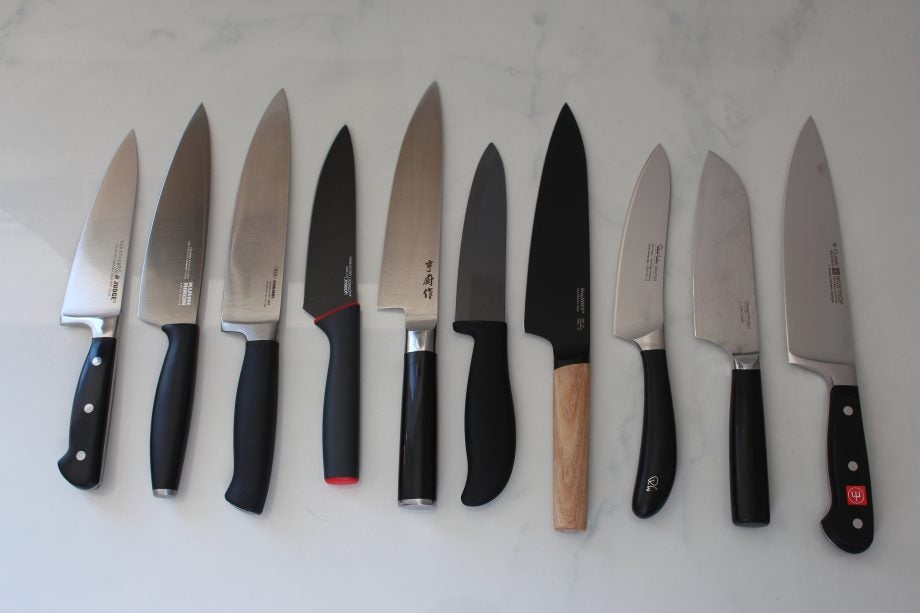
No matter your ability in the kitchen, it’s important to invest in a good set of knives. Make the right choice and you’ll find that it’s easier to prepare all types of meals, whether you’re cutting meat or dicing up an array of vegetables. Buying the best kitchen knives isn’t easy, however, with so much choice available.
In this guide, we’re looking at chef’s knives. If you’re going to buy one knife then these are the type to buy. All-purpose and versatile, a chef’s knife can be used for practically all tasks, from finely chopping herbs to slicing meat and chopping veg.
We’ve tested 13 kitchen knives, of which seven make the cut. From these, two stand out in particular. For the best all-round performance, the Zwilling Pro 20cm Chef’s Knife is our top choice. If you’re on a tighter budget, the Lakeland Ceramic Chef’s Knife is a great option too.
How we pick the best kitchen knives
Each of the chef’s knives in this roundup was subject to the same tests to see how it coped with preparing different types of food. We sliced tomatoes to test overall sharpness; meat and poultry to ascertain how well each handled chopping tough, fatty flesh and smooth chicken breasts; and fish for finer slicing with delicate, raw tuna steaks. We also tested the knives on a typical, heavy-duty task, such as chopping a butternut squash. Balance and usability, as mentioned, is a more subjective process, but we’ve tried to approach this from the point of view of a typical user.
Best kitchen knives
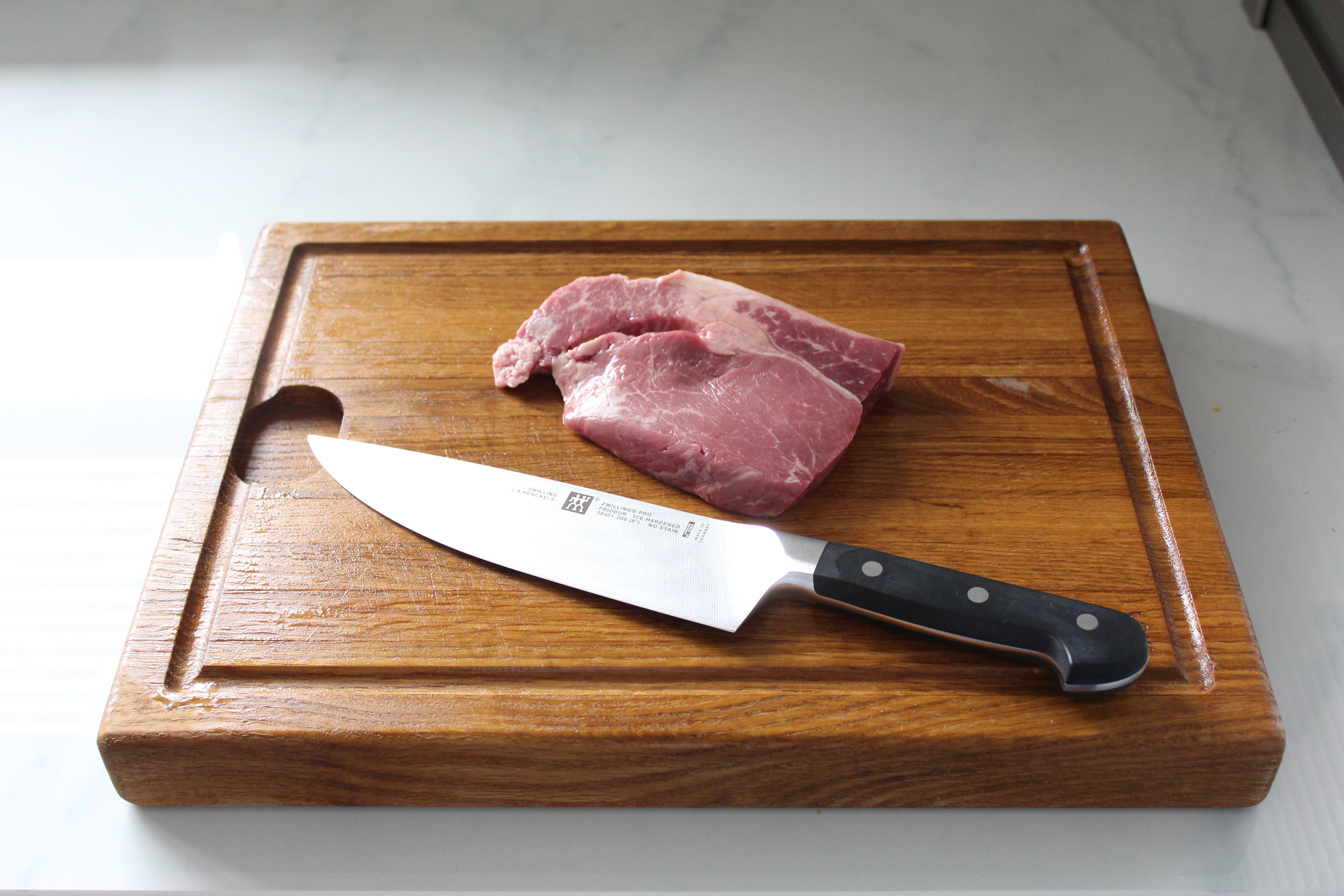
1. Zwilling Pro 20cm Chef’s Knife
Pros:
- Nimble
- Perfectly balanced
- Full tang
Cons:
- Some slices stick to blade
Exemplifying the all-rounder qualities of this style of knife, the 20cm Zwilling Pro Chef’s Knife lends itself to a variety of tasks. From slicing meat and fish to finely dicing vegetables, you can even use a rocking motion to chop herbs.
Its wedge-shaped bolstered blade can be used in its entirety to cut, meaning that the knife adapts to any user, and it has the weight required to get through more difficult tasks. It’s perfectly balanced for ease of working. It’s forged from a single piece of ice-hardened steel (full tang), known as Friodur, which gives greater hardness and edge retention as well as resistance against corrosion.
In our tests, the heel of the blade worked especially well when slicing large pieces of chicken and beef, with the tip of the blade nimble enough to trim excess fat and skin. It also chopped tuna and tomatoes without tearing, allowing them to be cut into thin slices. Butternut squash proved messier: while the edge had no trouble working through the flesh, the smoothness of the blade meant the slices tended to adhere rather than fall away.
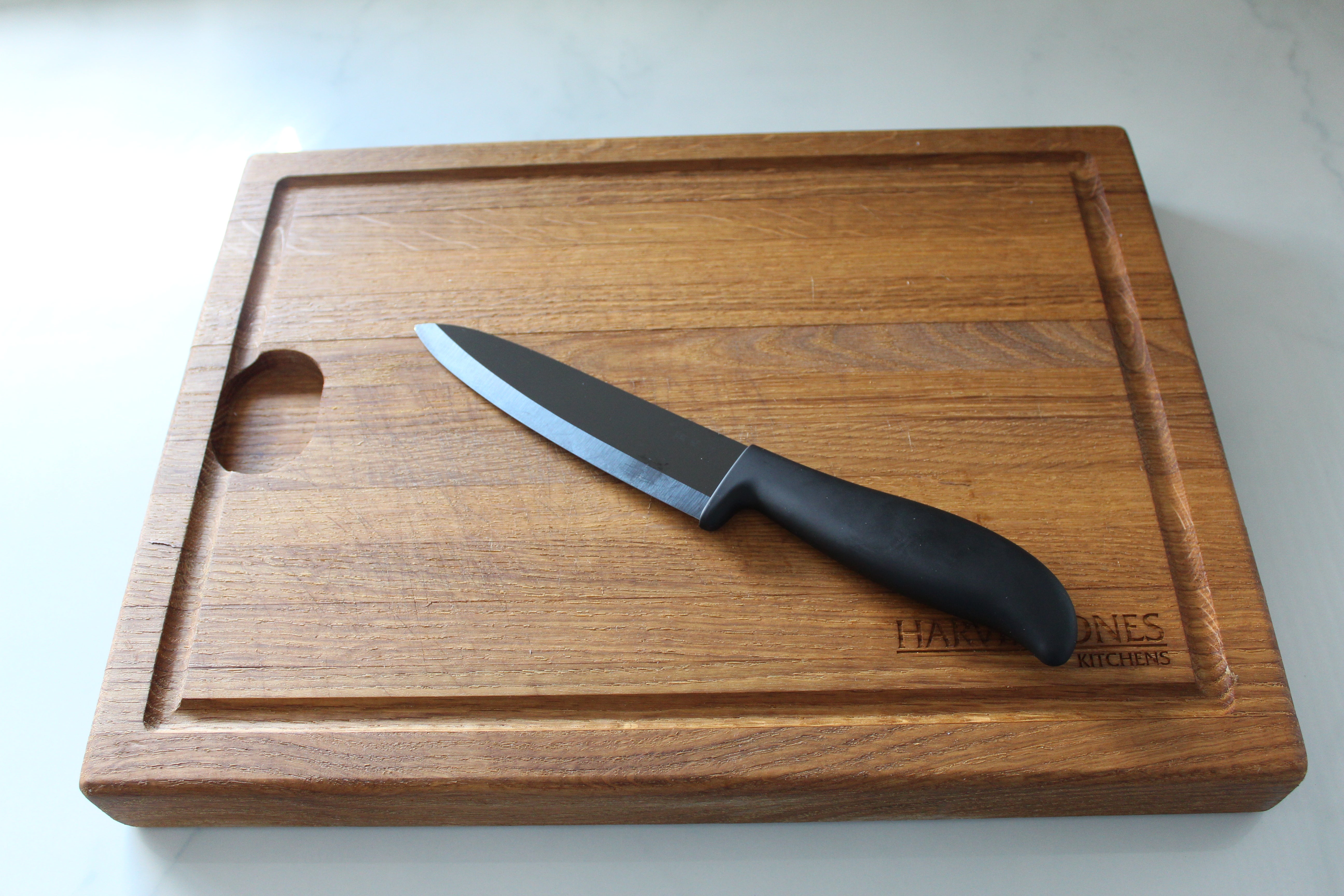
2. Lakeland Ceramic Chef’s Knife
Pros:
- Super-lightweight
- Very sharp
Cons:
- Compact size limits some jobs
While ceramic knives have a few limitations – in that they shouldn’t be used for jobs that require flexing or crushing, or on food with bones – the superb sharpness of the 15cm Lakeland Ceramic Chef’s Knife may well lure in the sceptics.
Not only is its half-tang blade subtly curved to create the traditional rocking motion of a chef’s knife, it’s super-lightweight, offering good balance between blade and handle.
Crafted to be 50% harder than steel knives and to remain sharp for 10 times longer, you’ll need to use its plastic sheath in the drawer – although this is as much to protect the other contents and your fingers as it is the blade.
Slicing, dicing, chopping and finer prep work proved a breeze for this knife. Its only challenge came from tackling the large butternut squash, where its compact size was a significant limitation.
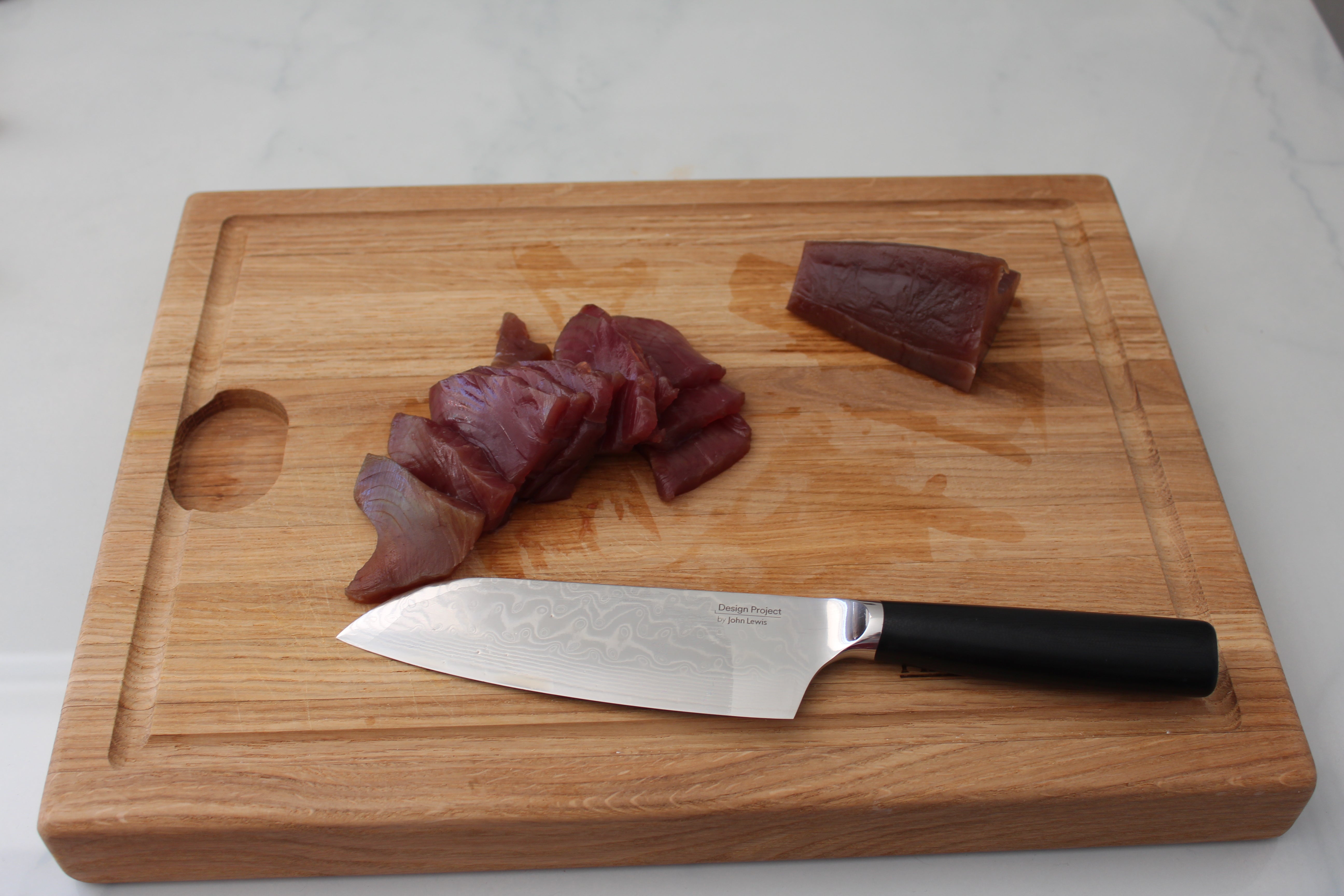
3. John Lewis Design Project No. 095 Santoku Knife
Pros:
- Excellent blade
- Precisely balanced
- Full tang
Cons:
- Rounded tip makes some jobs harder
The result of a collaboration between John Lewis and knife specialist Taylor’s Eye Witness, this Santoku knife is made using Damascus steel, recognisable by the distinctive rippled pattern.
Its blade uses 67 alternating layers of two grades of steel, around a thin core of 0.8% carbon stainless steel. This helps it to retain a sharp edge longer than standard kitchen knives. A slim bolster has also been welded in place, while its handle features an understated faux grain pattern.
Perfectly weight-balanced, this knife made an excellent prep tool, slicing easily through the fish, poultry, tomatoes and meat. A little more effort was required with the butternut squash, but chopping the hard flesh was still relatively easy.
The only task that was tricky was trimming hard fat from the meat; the job was made more difficult due to the knife’s rounded tip.
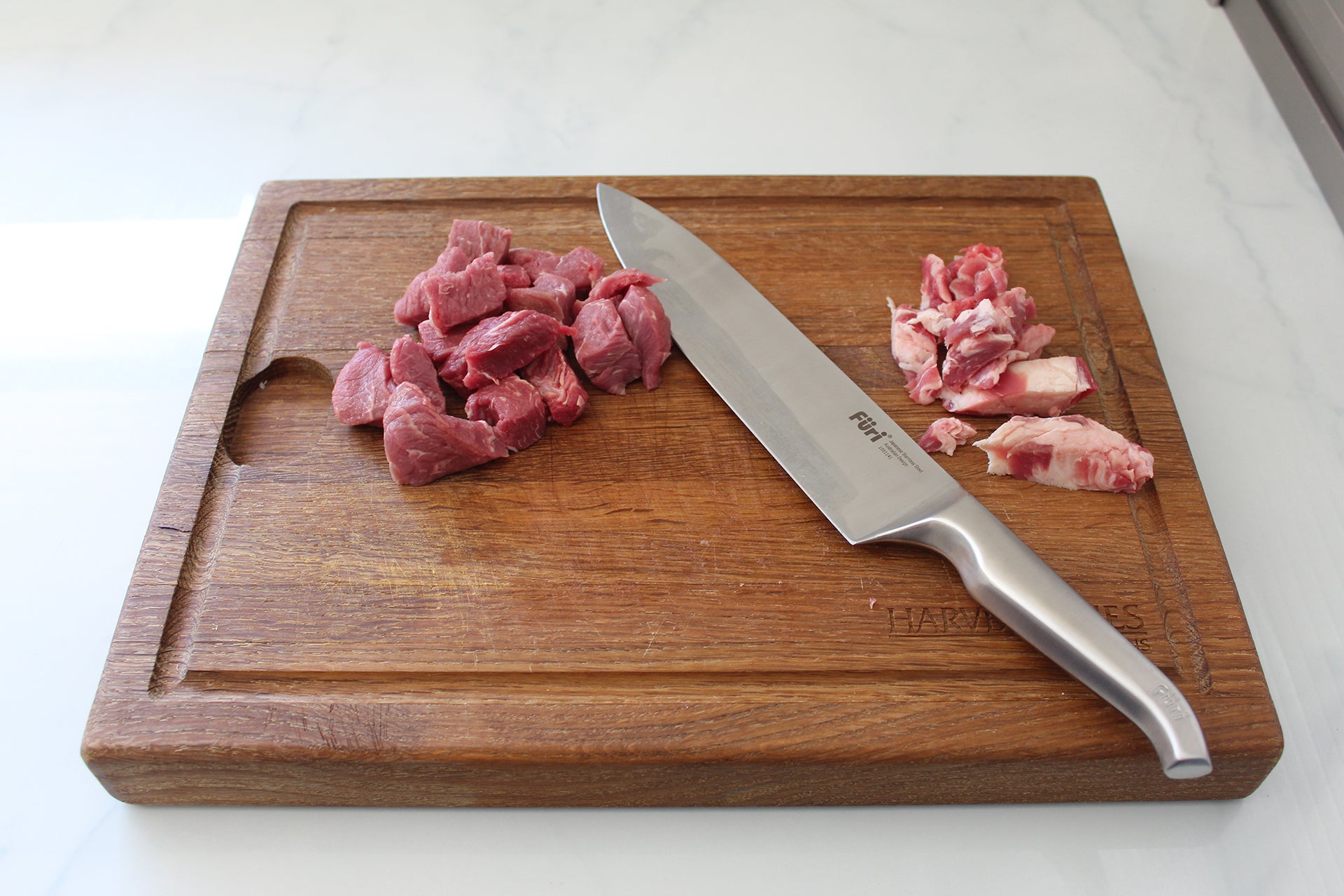
4. Füri Pro Chef’s Knife
Pros:
- Extra-long blade helps with leverage
- Exceptionally sharp
Cons:
- Large and heavy
- Tore the edges of the tuna steak
Australian brand Füri is beloved by celebrity chefs including Nigella Lawson and Kylie Kwong, so expectations were high for the Füri Pro Chef’s Knife.
This knife has an extra-long blade for increased leverage for larger items, and a patented handle with a wedge-shaped indentation that’s intended to be more comfortable to hold over extended periods.
There’s also a tapered bolster that allows the blade to be sharpened right to the heel. For anyone used to a smaller blade, the Füri Chef’s Knife will feel distinctly unwieldy and heavy. Most of the weight is in the thick blade, making the knife less balanced; its handle is surprisingly light. This makes manoeuvrability tricky at first, and the knife’s size feels more suited to halving a chicken than all-round chopping.
Despite this, it handled most tasks well, slicing tomatoes paper-thin and trimming fat from meat and poultry. It struggled to get through thicker parts of the butternut squash without extra effort, the blade sticking to the flesh and impeding its progress, but chopped well.
The tuna steak also proved more challenging – while thick slices were simple, thinner slices tore at the edges.
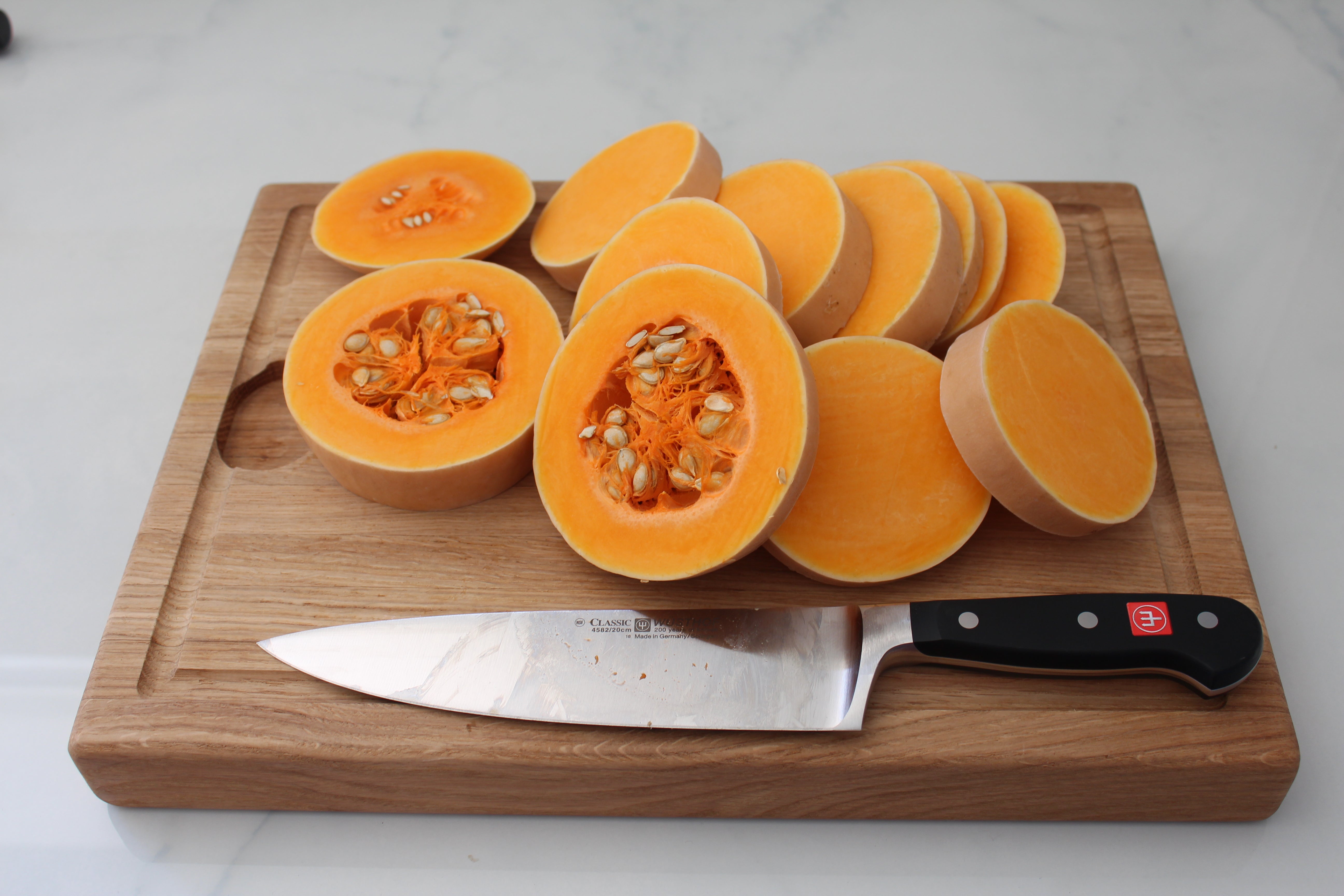
5. Wüsthof Classic Cook’s Knife
Pros:
- Ergonomic handle
- Exceptionally sharp
- Full tang
Cons:
- Large and heavy
Wüsthof offers a lifetime guarantee against manufacturing defects with its knives. Once you’ve used one, you’ll see exactly why the manufacturer is so confident of its quality.
Not only is the handle of the 20cm Classic Cook’s Knife robustly riveted in place, the blade is ‘pre-sharpened’ with a defined cutting angle. This is then finely sharpened, using the company’s PETec (Precision Edge Technology), creating an edge that isn’t just razor-sharp from initial use, but also easy to maintain.
Complete with a full bolster (there’s also a half-bolster model that’s even easier to sharpen) and ergonomic handle, the knife had enough weight to slice through the dense butternut squash in one motion with minimal effort, as well as glide through every other task.
If you’re not keen on large, heavy knives, Wüsthof’s Classic Cook’s Knife probably isn’t for you. But if you’re looking for a do-it-all professional-standard tool, it’s a smart investment.
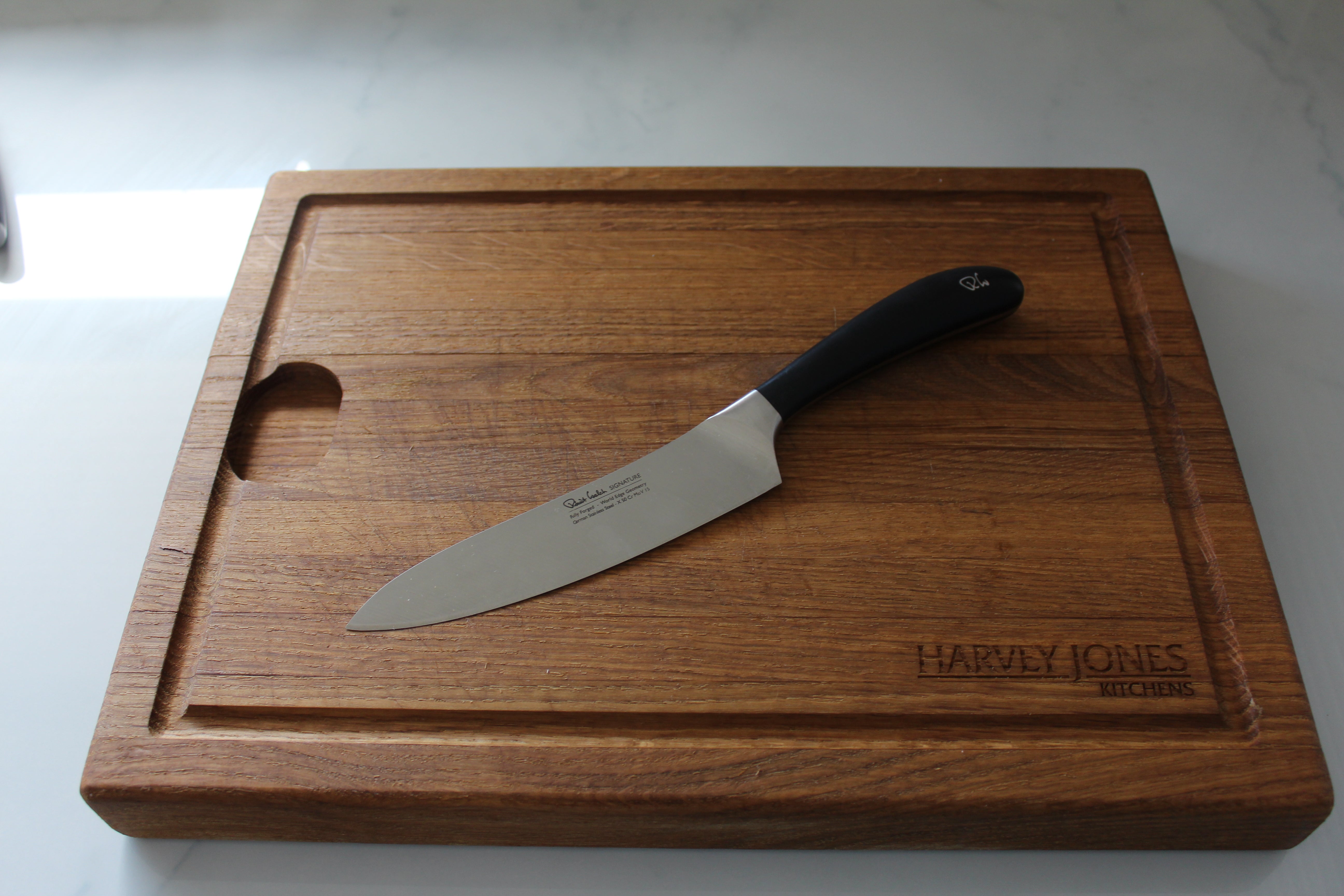
6. Robert Welch Signature Cook’s/Chef’s Knife
Pros:
- Angled bolster helps control
- Full tang
- Sailed through all cutting tests
Cons:
- A little small for some jobs
Designed in consultation with professional chefs, there’s good reason that this 16cm Cook’s knife from the multi-award winning Signature range is Robert Welch’s most popular size.
Compact enough not to feel unwieldy, yet with a Japanese-style blade edge that’s hand-applied at a 15-degree angle, the knife offers a perfect blend of strength and balance.
An angled bolster provides good control alongside full use of the blade edge, while the DuPont handle has been ergonomically shaped to minimise fatigue and features an RW insignia as a permanent steel detail.
The knife’s blade features a smooth curve for a two-step chop and rock action, meaning that it sailed through all the tests. Despite its smaller size, it even made light work of the more difficult squash. A fantastically versatile buy.
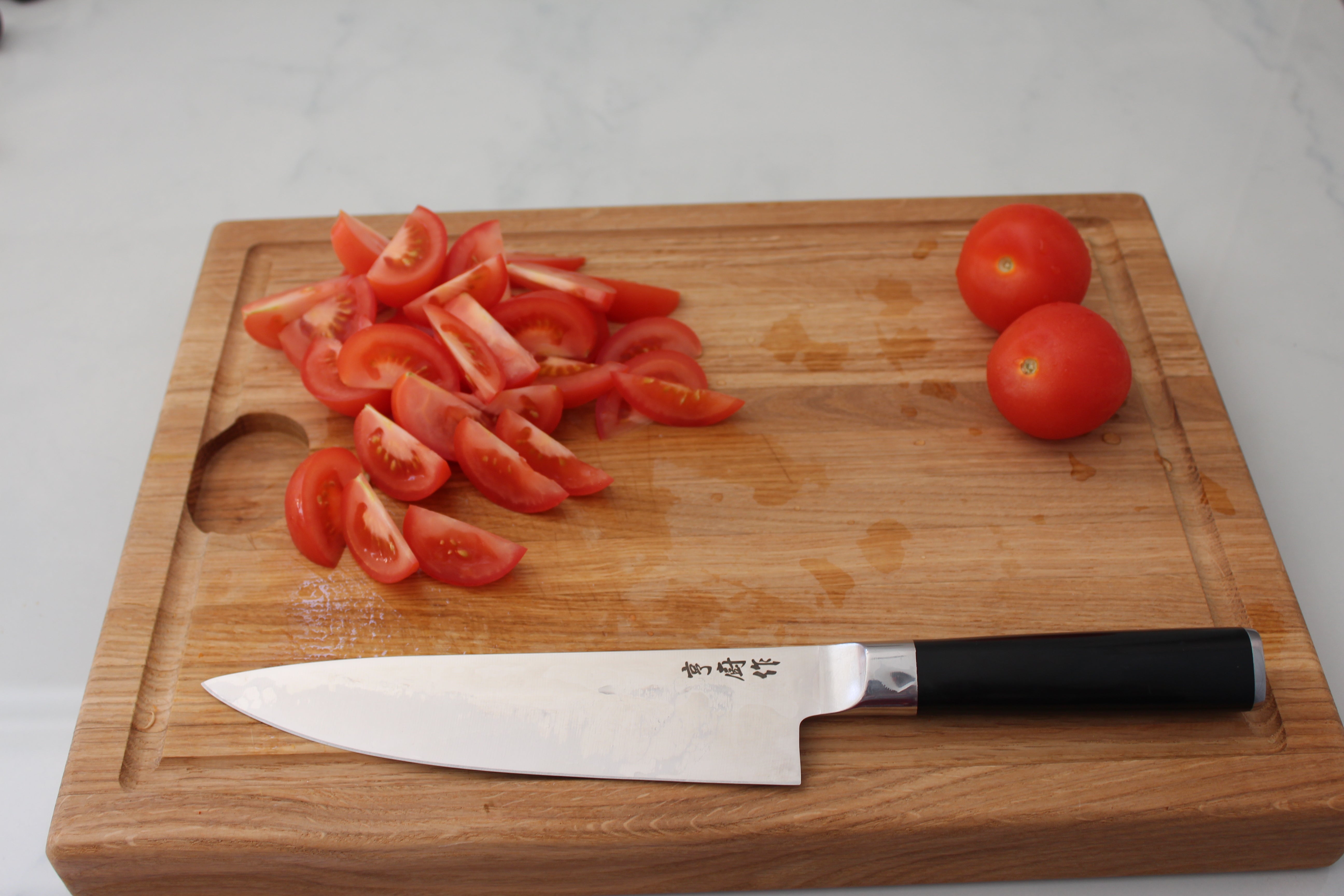
7. Stellar Taiku Cook’s Knife
Pros:
- Easy to control
- Super-sharp
- Great price
Cons:
- A little heavy
- Took some effort to cut butternut squash
Made from molybdenum vanadium steel for increased resistance to corrosion and wear, as well as greater strength, the Stellar Taiku Cook’s Knife’s 20cm taper-ground blade places precision at the heart of its design.
Rather than sporting a perfectly round handle, it slopes either side for greater manoeuvrability – and, like a Santoku knife, is bolster-free. It’s heavier than some, with more weight concentrated in the handle, so it may not work as well for prolonged prep sessions.
The rear of the blade is easy to control, however, and perfect for fine chopping. The blade is beautifully sharp and handled all the trimming, slicing and chopping tasks effortlessly – except for the butternut squash. This required a significant amount of pressure – exacerbated by the lack of a bolster – to ease the knife through the flesh.
However, for the price, the Stellar Taiku is a good all-rounder and a great value buy.
Those are our picks of the best kitchen knives. For more information on how to pick the right model for you, keep reading.
Best kitchen knives buying guide
Best kitchen knives – What is the tang?
The tang is the part of the blade that attaches it to the handle. Knives can be described as full tang or half tang. Full-tang knives feature a tang that extends the whole length of the handle, which aids strength and balance. In a half-tang knife it extends only part way along the handle, although this may be as much as three-quarters of the length of the knife. Half tang will be fine for regular prep work, but keen cooks are likely to prefer full tang knives.
Best kitchen knives – How important is balance?
The balance of a knife is pretty subjective. Roughly speaking, it’s the feeling that neither the handle nor the blade is uncomfortably weighted, dragging you back or forward when in use. A knife that feels unstable will demand more effort when preparing food, so it’s important to find the right balance. The total weight of a knife will affect how it feels. Large, heavy knives won’t be for everyone. The bolster (the wedge-shaped part between handle and blade) will affect the balance and control too, although stamped blades and Japanese-style blades usually won’t have this feature.
Best kitchen knives – What type of steel should I buy?
The type of steel from which the knife is made will affect both its performance and maintenance. Stainless steel is the most affordable option, but the blade won’t hold its cutting edge for long, so it will require regular sharpening – ideally after each use. Carbon steel – with its higher carbon content than plain stainless steel – is more expensive, but it’s easier to keep the blade sharp; you may need to sharpen it only every few months. Damascus steel is made by forging two or more types of steel alloy together in layers. It will usually have a carbon steel core that’s overlaid with hard and soft stainless steel. This creates an edge that can be ground to be very sharp, and a mottled appearance.
Best kitchen knives – Are ceramic knives worth buying?
Lightweight and low maintenance, ceramic blades retain their edge for longer than steel and are harder than carbon steel, which is great news for those who forget to sharpen regularly. However, they can chip and snap under excess pressure. Thanks to a thin, precise blade, they excel at filleting, carving, dicing and slicing – but may not be up to the heavy-duty tasks of a steel knife.
Best kitchen knives – What’s a Santoku knife?
Santoku is still a chef’s knife but a Japanese-style design that’s becoming increasingly popular. Rather than having a pointed end, it’s curved, making it adept at the slicing and chopping that features heavily in Asian cuisine. You may also find dimples or scallops ground into the blade that allow air to flow between the food and the blades, so slices fall away instead of sticking to the blade. This is also known as a Granton edge. Where Santoku knives may fall short is with bigger jobs, such as halving a chicken, since they lack the broad heel of a traditional chef’s knife.
Best kitchen knives – Do I need a Sabatier knife?
Sabatier is a term used by several manufacturers to indicate quality by referring to knife production in Thiers, France. The name isn’t protected and as such the knives might be made by several producers, located anywhere.

